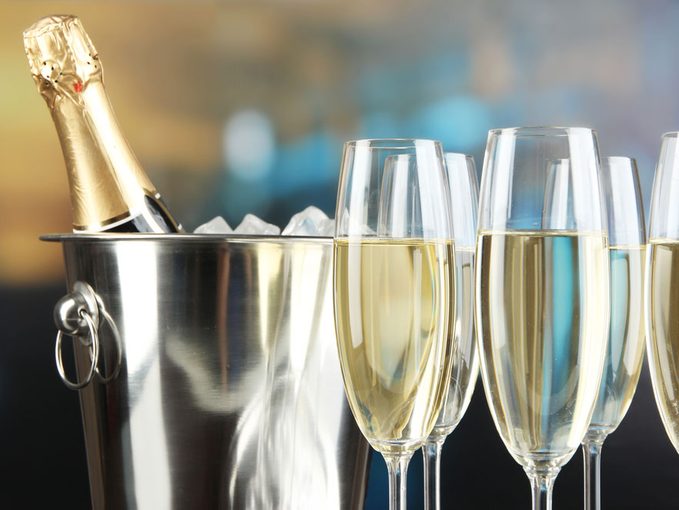Champagne Etiquette: How to Impress Your Guests
Not a wine connoisseur? Fake it with our champagne etiquette cheat sheet

Source: Best Health magazine, November/December 2015
Did you know that only sparkling wine made from grapes grown in Champagne (a region northeast of Paris) is allowed to be called by that name? The French have maintained their legal right to call their wines "champagne" for over a century – the Treaty of Madrid, signed in 1891, established this rule, and the Treaty of Versailles, signed in 1919, reaffirmed it.
Elsewhere it’s called’
Crémant or Mousseaux: Sparkling wine still made in France but outside of Champagne
Prosecco: Bubbly made in Veneto, the region north of Venice
Cava: Spain’s national bubbly and also how we refer to it in North America
Which glass is best for bringing out the best in champers? You decide:
Flute fanciers
This tall glass helps keep the drink colder, longer, makes for more bubbles because they get trapped in the mouth and provides more of a nose tingle than other glasses. Additionally, the flute concentrates carbon dioxide at the top of the glass.
Coupe connoisseurs
This shape has a long and celebrated history and evokes imagery of the roaring ’20s and ’60s – both eras when it was popular. If this is your preferred glass, drink your bubbly fast because the coupe’s wide mouth means the bubbles evaporate more quickly than in a flute.
White now
Some experts are now pouring champagne into a simple white wine glass, as it emphasizes both the fizz and the aroma.
So, what makes champagne so unique in flavour? The region’s cooler northern climate and chalky soils – the result of a large earthquake millions of years ago – give this sparkling wine its distinctive flavour.
Thanks – and cheers – to the champagne experts at Hopson Grace, Toronto, for sharing these fizzy facts.




